Which vitamin C beauty products are best?
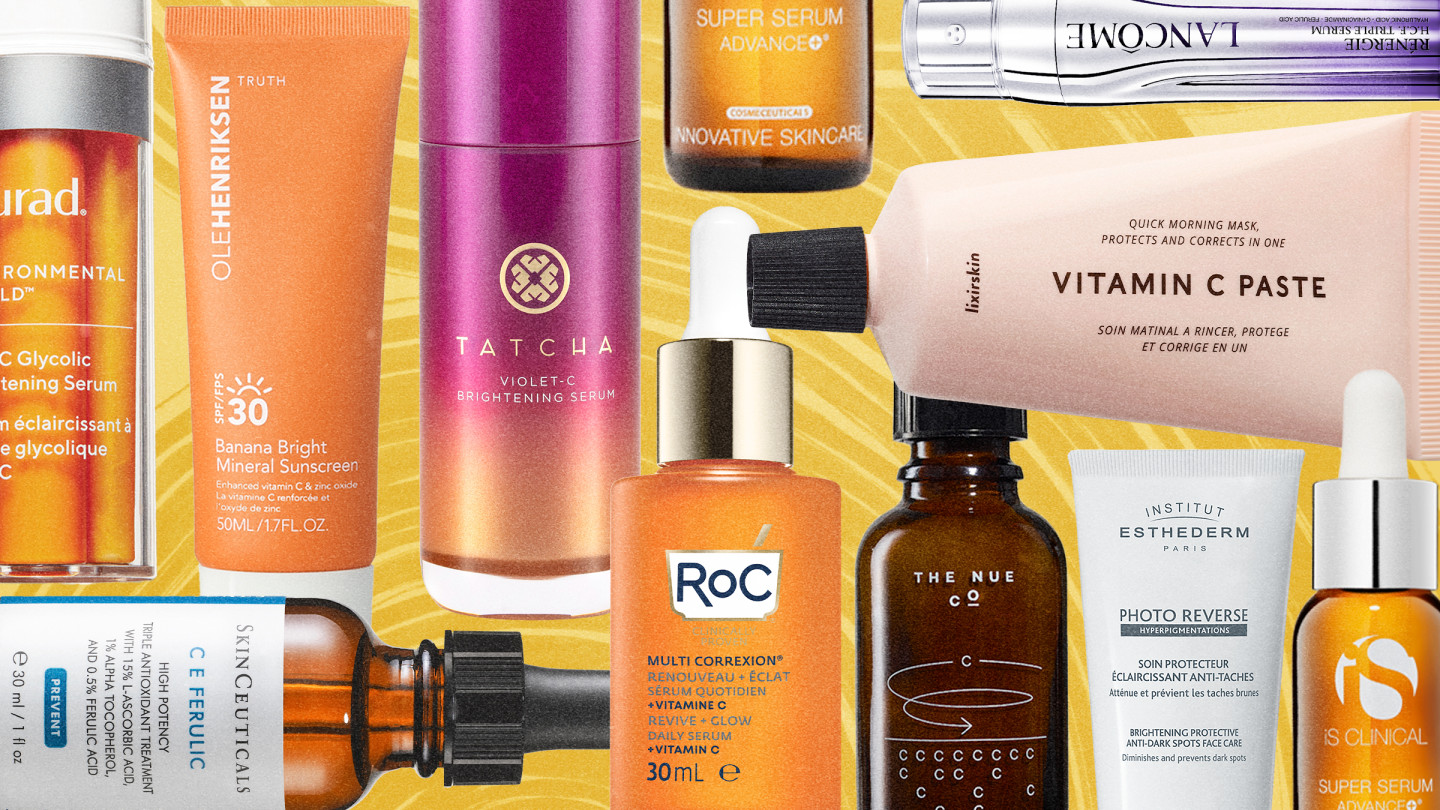
Roula Khalaf, Editor of the FT, selects her favourite stories in this weekly newsletter.
Alongside sunscreen and retinol, vitamin C should be an essential part of every skincare routine – year round, and regardless of skin type. It is a powerful antioxidant that delivers multiple benefits from photoprotection and anti-ageing to brightening and anti-pigmentation.
First and foremost it addresses hyper-pigmentation by restricting the activity of the enzyme tyrosinase (which acts as a catalyst in the production of melanin), thus inhibiting melanin synthesis, lightening the uneven pigmentation, and leading to a brighter complexion.
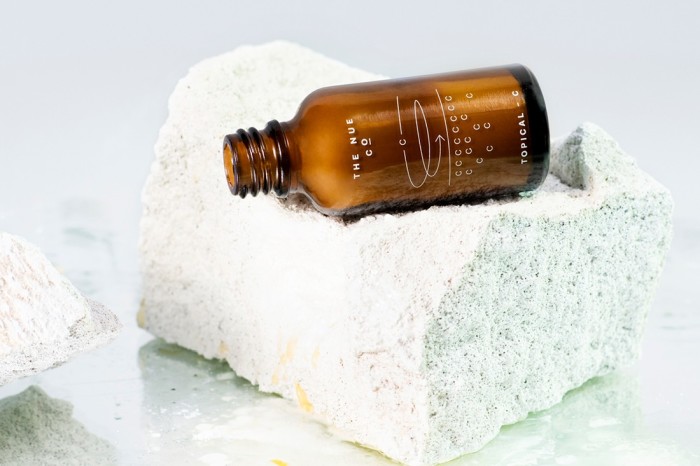
Skincare brands are also keen to tell us of vitamin C’s superhero-like abilities to fight free-radical damage. Everyday solar radiation, pollution and smoking can cause oxidative stress, and skin can no longer protect itself when environmental free radicals outweigh the antioxidants. Vitamin C, however, donates its electrons to free radical molecules, thus neutralising oxidative stress, which helps to slow accelerated skin ageing and skin-cancer development.
Vitamin C is best incorporated into skincare routines via concentrated serums – the step that comes post-toner and pre-moisturiser. Applied in the morning, a serum will act as a defensive shield against free radicals.
To be effective, serum must contain between 8 and 20 per cent vitamin C. Those below 8 per cent won’t deliver meaningful results. And studies show that serums above 20 per cent might cause irritation – plus higher concentration doesn’t increase its effectiveness. I’d suggest choosing one that sits in the Goldilocks zone (not too low, not too high) of 10 to 20 per cent.
(Before I launch into some recommendations, it’s also worth noting that I have long despaired at the commercial marketing of vitamin C products in yellow or orange packaging. The irony is that vitamin C turns a rancid orange colour once it starts to oxidise, which means it is losing efficacy and is on the route to going off! It’s a useful thing to know because, as its efficacy falls, you’ll need to use more to achieve the same results.)
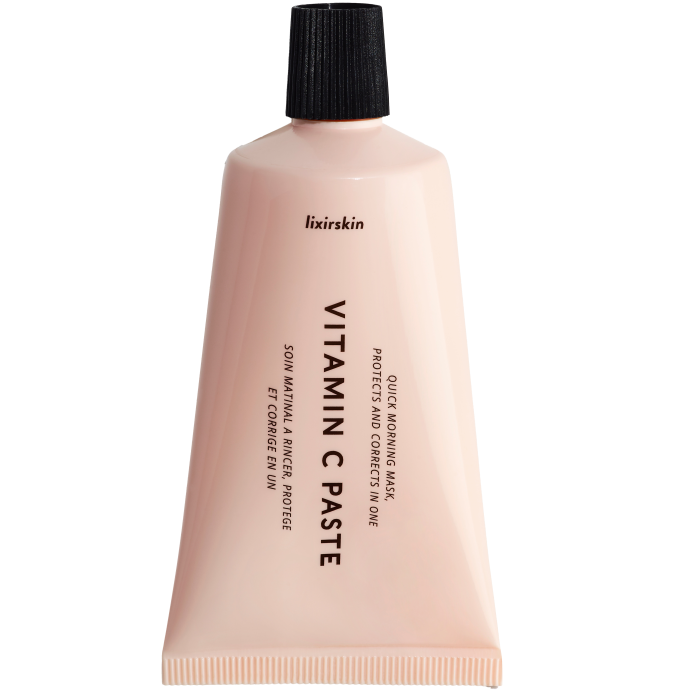
Lixirskin Vitamin C Paste, £35 for 50ml
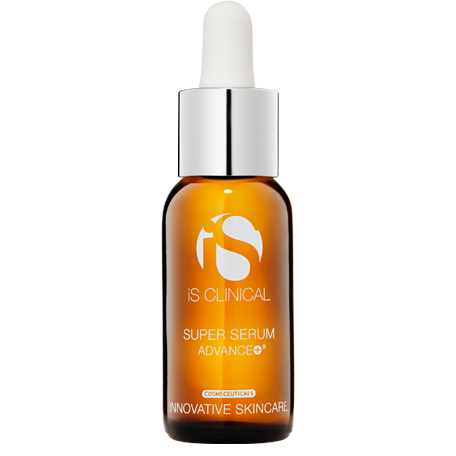
iS Clinical Super Serum, £155 for 30ml
For beginners, the lightweight RoC Multi Correxion® Revive + Glow 10 per cent active vitamin C formula will ease skin gently into results. For seasoned users, Tatcha Violet-C Brightening Serum is a colourless, fragrance-free 20 per cent vitamin C formula with Japanese beautyberry (yes, it’s really called that) for antioxidant support, and 10 per cent fruit acids to resurface without irritation. To ease in gently, I’d advise blending one part hyaluronic acid with one part vitamin C.
For sensitive skin, there’s Lixirskin Vitamin C Paste. Rather than a serum, this 10 per cent L-ascorbic acid formula is a morning wash-off paste mask, designed to revive greyish, greenish undertones. To play the long-game, choose iS Clinical Super Serum, with its 15 per cent vitamin C time-release technology, bio-identical copper tripeptide growth factors, and powerful botanical antioxidants.
Vitamin C is extremely versatile, but it has a catch: it is highly prone to oxidisation, which not only turns it orange-brown but diminishes its efficacy. But a number of brands have addressed this problem cleverly, such as The Nue Co Topical-C, which uses the most stable form of vitamin C, L-ascorbic acid, in a powder form, and in an opaque bottle that’s a little like a salt shaker. It doesn’t activate until you sprinkle the right dose (2-3 shakes) into a serum or moisturiser.
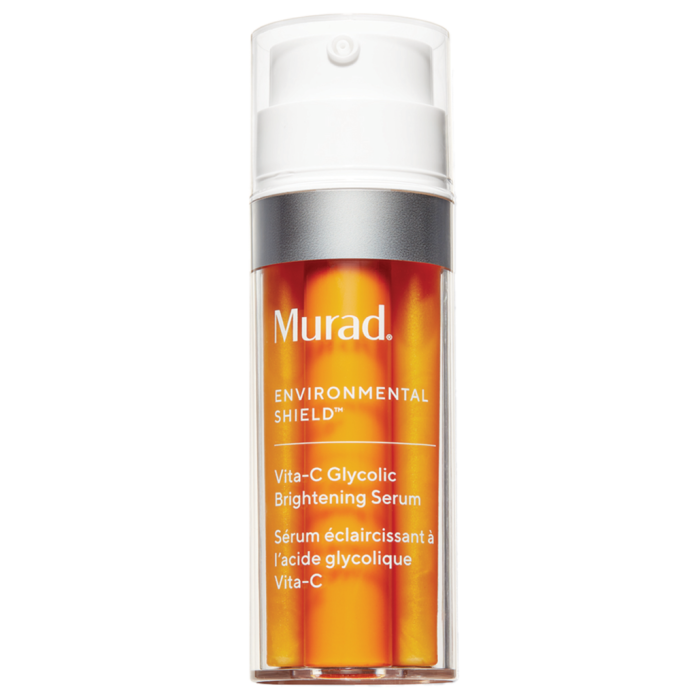
Murad Vita-C Glycolic Brightening Serum, £82 for 30ml
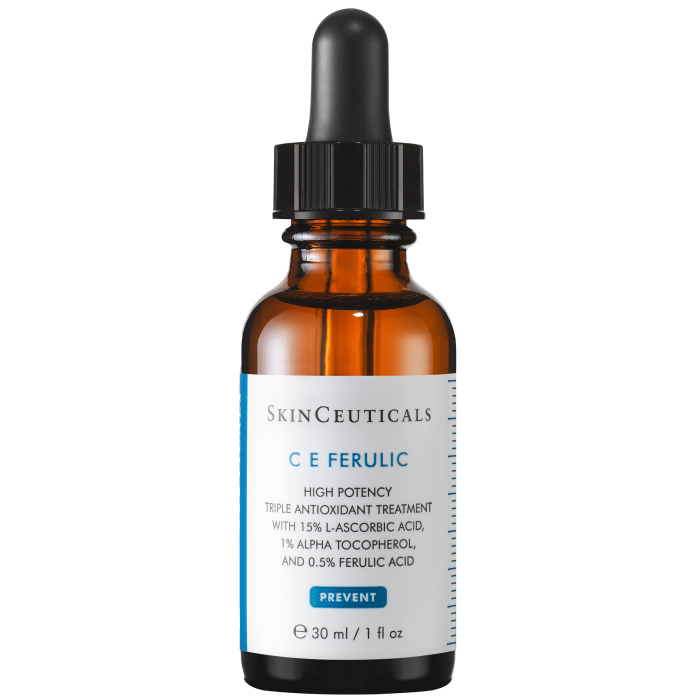
Skinceuticals C E Ferulic serum, £165 for 30ml
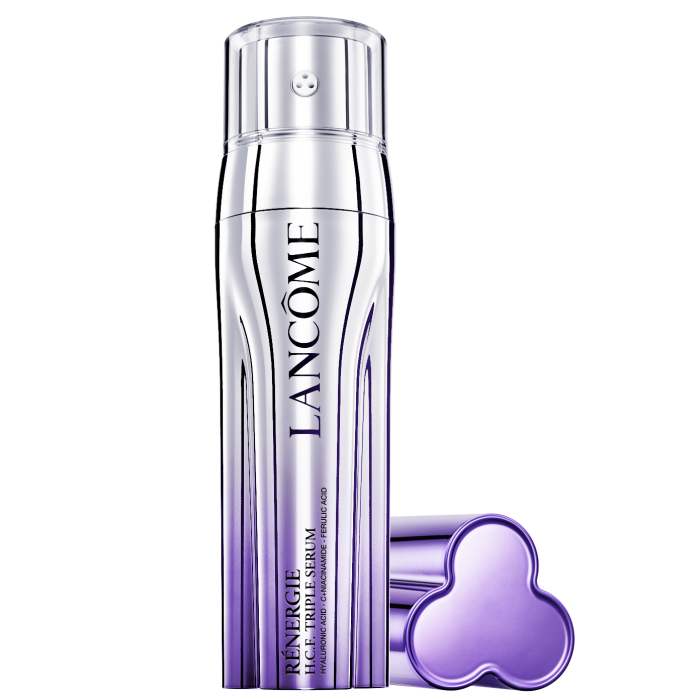
Lancôme Rénergie HCF Triple Serum, £79.20 for 50ml
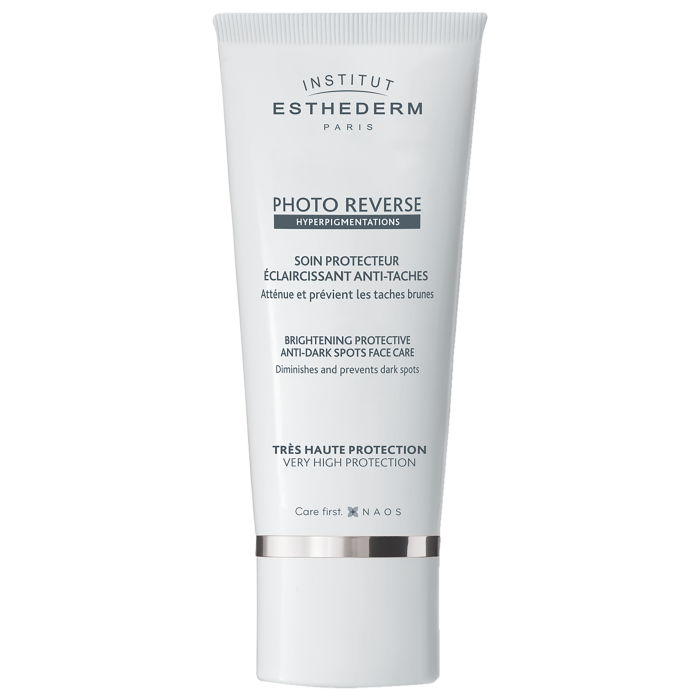
Institut Esthederm Photo Reverse High Protection, £57 for 50ml. spacenk.com
But it’s worth noting that you can’t mix vitamin C with everything – for example various acids, which function best in environments with a very different pH level. (I’d recommend using vitamin C in the morning and separate acids or retinol products at nighttime, as combining it with other actives can lead to irritation.) To combat this, Murad’s Vita-C Glycolic Brightening Serum has created a stabilised delivery system with separate chambers that pump the exact dose simultaneously, so there’s no prior contact between the ingredients. This ensures that the glycolic acid gently resurfaces dead skin cells to create the optimum environment for deeper vitamin C penetration.
Vitamin C does, however, work well with other antioxidants such as ferulic acid and vitamin E. The anti-inflammatory and photoprotective ferulic acid is derived from the cell walls of plants. Combining with vitamin C works exceptionally well on areas with redness, post-inflammatory hyper-pigmentation, and brown patches related to melasma. Try cult favourite Skinceuticals C E Ferulic serum (for mature, sun damaged skin) and its later iterations Phloretin CF (for oily skin) and Silymarin CF (for acne-prone skin).


FT Weekend Festival returns on Saturday 2 September at Kenwood House Gardens, London. Book your tickets to enjoy a day of debates, tastings, Q&As and more... Speakers include Julian Barnes, Margot Henderson, Henry Holland, Ravinder Bhogal and many others, plus all your favourite FT writers and editors. Register now at ft.com/festival.
Hyaluronic acid (HA) and vitamin C are also a good combination because HA’s humectant (ie water-attracting) properties can help offset the dryness that sometimes occurs with vitamin C. Lancôme Rénergie HCF Triple Serum uses HA to lighten its cocktail of vitamin C, niacinamide and ferulic acid. Each pump dispenses the right dose through triple chambers so they can be blended in your palm. (It was once believed that niacinamide/vitamin B3 and vitamin C were a no-go, but the truth is that they can be used together if it’s a stable form of vitamin C.)
But the ultimate dynamic power couple is vitamin C and sunscreen: together they are more effective at neutralizing free-radical damage and creating a defensive UV shield than sunscreen alone. According to one study, using sunscreen and 10 per cent vitamin C results in a 52 per cent reduction in redness and a 40 to 60 per cent reduction in the development of sunburn cells. I’d recommend a broad-spectrum suncare product such as Institut Esthederm Photo Reverse High Protection or a pre-blended vitamin C and SPF formula such as Ole Henriksen Banana Bright Mineral Sunscreen SPF30, which has a soft, matte finish to correct uneven skin tone and prevent sun damage. Hopefully, now that you know vitamin C and SPF are better when intertwined, you’ll never separate them again.
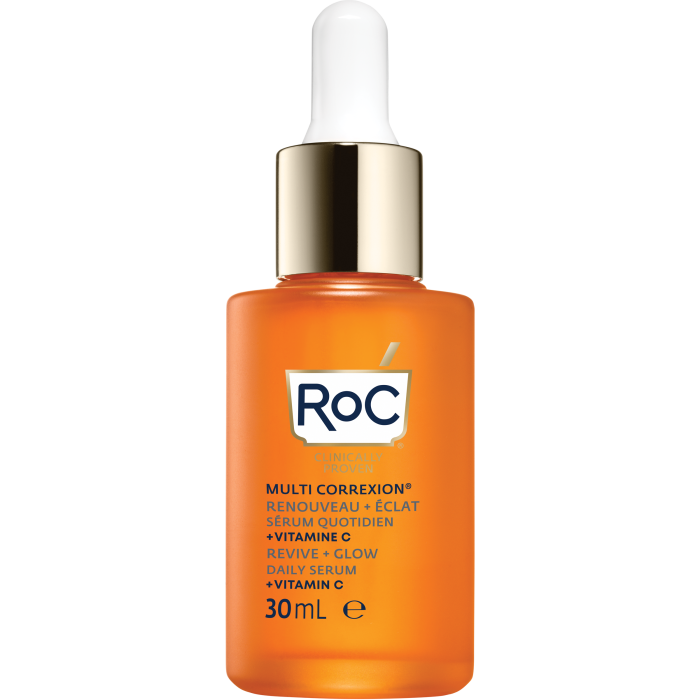

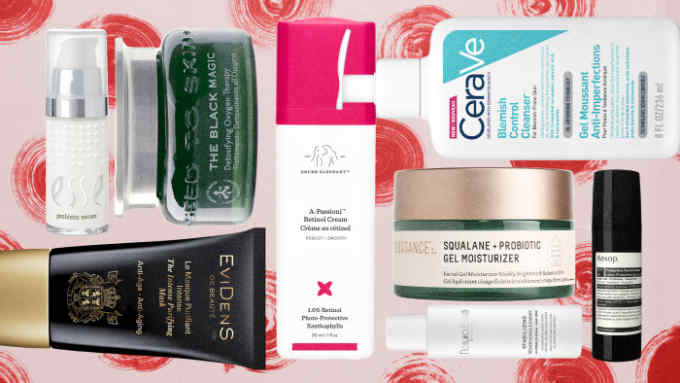
Comments